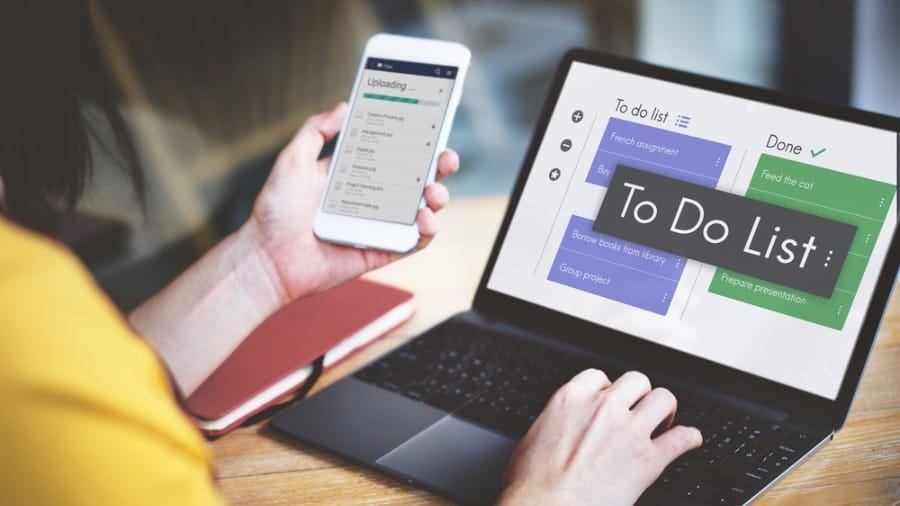10 Ways to Maximize Your Day with a To-Do App
Discover 10 strategies to enhance productivity using to-do apps, including task prioritization, time blocking, and integrating with other tools.

In today's fast-paced world, staying organized and managing time effectively are crucial skills. To-do list applications have become indispensable tools for individuals aiming to enhance productivity and ensure that important tasks are not overlooked. This comprehensive guide explores ten strategies to maximize your day using a to-do app, providing insights, practical tips, and resources to help you harness the full potential of these digital assistants.
1. Choose the Right To-Do App for Your Needs
Selecting an application that aligns with your personal or professional requirements is the foundation of effective task management. Different apps offer varying features, interfaces, and integrations. Here are some top-rated to-do list apps:
- Todoist: Known for balancing power and simplicity, Todoist offers a user-friendly interface with robust features suitable for both personal and professional use.
- TickTick: This app provides embedded calendars and timers, making it ideal for users who need to integrate scheduling with task management.
- Microsoft To Do: A simple yet effective tool that integrates seamlessly with other Microsoft products, enhancing productivity within the Microsoft ecosystem.
- Remember The Milk: An easy-to-use app with extensive third-party integrations, suitable for users seeking a straightforward task management solution.
- OmniFocus: Designed for Apple users, OmniFocus offers sophisticated features tailored for complex task management needs.
When choosing an app, consider factors such as platform compatibility, user interface, customization options, and integration capabilities with other tools you use.
2. Organize Tasks with Categories and Tags
Effective organization within your to-do app can significantly enhance productivity. Utilize categories and tags to group related tasks, making it easier to navigate and prioritize your workload. For instance:
- Categories: Create broad categories such as "Work," "Personal," "Health," and "Finance" to compartmentalize tasks.
- Tags: Use specific tags like "Urgent," "Email," "Call," or "Errand" to add context to tasks and facilitate filtering.
This hierarchical structure allows for a clearer overview and helps in focusing on specific areas without feeling overwhelmed.
3. Prioritize Tasks Using the Eisenhower Matrix
Prioritization is key to effective task management. The Eisenhower Matrix, also known as the Urgent-Important Matrix, is a powerful tool for this purpose. It involves categorizing tasks into four quadrants:
- Urgent and Important: Tasks that require immediate attention.
- Important but Not Urgent: Tasks that are important but can be scheduled for later.
- Urgent but Not Important: Tasks that are urgent but can be delegated.
- Not Urgent and Not Important: Tasks that have little value and can be eliminated.
Some to-do apps offer features to assign priorities or labels, enabling you to implement this matrix effectively within the application.
4. Set Realistic Deadlines and Reminders
Assigning deadlines creates a sense of urgency and helps in tracking progress. Be realistic about the time required for each task to avoid overloading your schedule. Utilize reminders to prompt you about upcoming deadlines, ensuring that nothing slips through the cracks.
5. Break Down Large Tasks into Manageable Subtasks
Large, complex tasks can be daunting and may lead to procrastination. Breaking them down into smaller, manageable subtasks makes them more approachable and provides a clear path to completion. This approach also allows you to track progress incrementally, which can be motivating.
6. Leverage Recurring Tasks for Regular Activities
For tasks that occur regularly, such as weekly meetings or monthly reports, set them as recurring tasks within your to-do app. This automation reduces the need to manually input repetitive tasks and ensures that routine activities are consistently accounted for.
7. Integrate Your To-Do App with Other Tools
Integrating your to-do app with other tools can streamline your workflow and centralize task management. For example:
- Calendar Integration: Sync tasks with your calendar to visualize deadlines and allocate time effectively.
- Email Integration: Convert emails into tasks directly from your inbox, ensuring that important communications are actioned.
- Project Management Tools: Integrate with platforms like Trello or Asana for a comprehensive view of projects and associated tasks.
These integrations can enhance efficiency and reduce the need to switch between multiple applications.
8. Utilize Collaboration Features for Team Projects
If you're working within a team, leveraging collaboration features can improve communication and task delegation. Many to-do apps offer functionalities such as:
- Shared Task Lists: Allowing team members to view and contribute to common tasks.
- Task Assignments: Assigning specific tasks to individuals with clear deadlines.
- Commenting and File Sharing: Facilitating discussions and resource sharing within tasks.
Effective use of these features can enhance teamwork and ensure accountability.
9. Review and Reflect Regularly
Regularly reviewing your task list helps in assessing progress and making necessary adjustments. Set aside time daily or weekly to:
- Evaluate Completed Tasks: Reflect on what has been accomplished and identify any patterns or areas for improvement.
- Reschedule or Reprioritize Tasks: Adjust deadlines and priorities based on priority.
10. Implement Time Blocking for Structured Work Periods
Time blocking is a productivity technique where you divide your day into dedicated segments, each assigned to specific tasks or groups of tasks. This method integrates the functionalities of a calendar with a to-do list, promoting single-tasking and reducing the likelihood of distractions. By allocating fixed time slots for particular activities, you create a structured environment that can enhance focus and efficiency.
By committing to continuous learning, you can adapt and refine your approach to task management, ensuring sustained productivity and personal growth.
Incorporating these strategies into your daily routine can significantly enhance the effectiveness of your to-do app, leading to improved organization, efficiency, and overall productivity.
